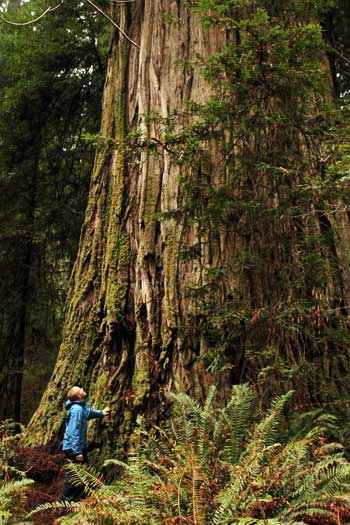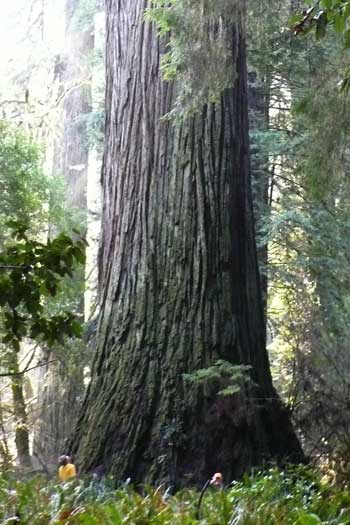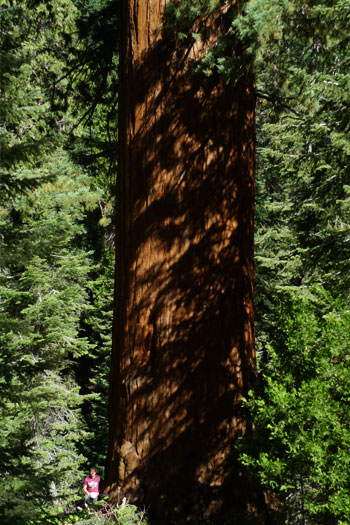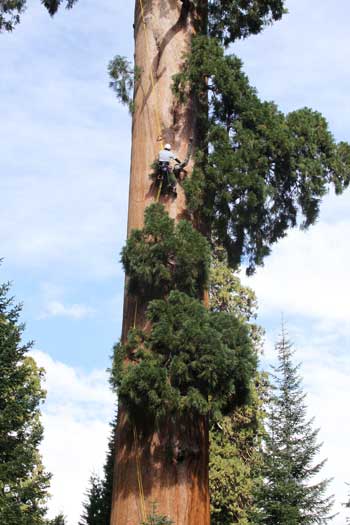Scientific Proof for Value of Old-Growth Trees
Scientific Papers, Research Materials & Books Referenced in Studies Concerning the Value Provided by Old-Growth Trees.
- Beresford-Kroeger D. Arboretum America, A Philosophy of the Forest. The University of Michigan Press; 2003. [Google Scholar]
- Beresford-Kroeger D. The global forest. New York: Viking Penguin; 2011. [Google Scholar]
- Beresford-Kroeger D. Arboretum Borealis, A lifeline of the planet. The University of Michigan Press; 2013. [Google Scholar]
- Beresford-Kroeger D (2018) The medicine of trees. In: The Ninth Haig Brown Memorial Lecture. Campbell River Community Arts Council, Campbell River, British Columbia
- Beresford-Kroeger D (2019) To Speak for the Trees. Random House Canada
- Betts MG, Phalan B, Frey SJK, et al. Old-growth forests buffer climate-sensitive bird populations from warming. Divers Distrib. 2017;24:439–447. doi: 10.1111/ddi.12688. [CrossRef] [Google Scholar]
- Blicharksa M, Mikusinski G. Old trees: cultural value. Science. 2013;80(339):904. doi: 10.1126/science.339.6122.904-b. [PubMed] [CrossRef] [Google Scholar]
- Blicharksa M, Mikusinski G. Incorporating social and cultural significance of large old trees in conservation policy. Conserv Biol. 2014 doi: 10.1111/cobi.12341. [PubMed] [CrossRef] [Google Scholar]
- Brodo IM, Sharnoff SD, Sharnoff S. Lichens of North America. Yale University Press; 2001. [Google Scholar]
 Cannon, C.H., Piovesan, G. & Munné-Bosch, S. Old and ancient trees are life history lottery winners and vital evolutionary resources for long-term adaptive capacity. Nat. Plants 8, 136–145 (2022). https://doi.org/10.1038/s41477-021-01088-5
Cannon, C.H., Piovesan, G. & Munné-Bosch, S. Old and ancient trees are life history lottery winners and vital evolutionary resources for long-term adaptive capacity. Nat. Plants 8, 136–145 (2022). https://doi.org/10.1038/s41477-021-01088-5- Connell DJ, Shapiro J, Lavallee L. Old-growth forests values: a case study of the Ancient Cedars of British Columbia. Soc Nat Resour. 2015 doi: 10.1080/08941920.2015.1041660. [CrossRef] [Google Scholar]
- Crini G, Lichtfouse E, Chanet G, Morin-Crini N (2020) Applications of hemp in textiles, paper industry, insulation and building materials, horticulture, animal nutrition, food and beverages, nutraceuticals, cosmetics and hygiene, medicine, agrochemistry, energy production and environment: a review. Environ Chem Lett 18:1451–1476. 10.1007/s10311-020-01029-2
- Dafni A. On the typology and the worship status of sacred trees with a special reference to the Middle East. J Ethnobiol Ethnomed. 2006 doi: 10.1186/1746-4269-2-26. [PMC free article] [PubMed] [CrossRef] [Google Scholar]
- Dai H, Han J, Lichtfouse E (2021) Smarter cures to combat COVID-19 and future pathogens: a review. Environ Chem Lett 19:2759–2771. 10.1007/s10311-021-01224- 9 [PMC free article] [PubMed]
- Dean C, Kirkpatrick JB, Doyle RB, et al. The overlooked soil carbon under large old trees. Geoderma. 2020 doi: 10.1016/j.geoderma.2020.114541. [CrossRef] [Google Scholar]
- Deein G, Thimdee W, Matsunaga K. Bioavailable colloidal iron in river water originated from the forest. Mar Freshw Res. 2002 doi: 10.1071/MF00145. [CrossRef] [Google Scholar]
- Dimri S, Baluni P, Sharma CM. Biomass production and carbon storage potential of selected old-growth temperate forests in Garhwal Himalaya, India. Proc Natl Acad India Sect B Biol Sci. 2017;87:1327–1333. doi: 10.1007/s40011-016-0708-0. [CrossRef] [Google Scholar]
- Elkhateeb WA. What medicinal mushroom can do? Chem Res J. 2020;5:106–118. [Google Scholar]
- Elkhateeb WA, Daba GM, Elnahas MO, Thomas PW. Fomitopsis officinalis mushroom: ancient gold mine of functional components and biological activities for modern medicine. Egypt Pharm J. 2019;18:285–289. doi: 10.4103/epj.epj_46_19. [CrossRef] [Google Scholar]
- Fawzy S, Osman AI, Doran J, Rooney DW. Strategies for mitigation of climate change: a review. Environ Chem Lett. 2020;18:2069–2094. doi: 10.1007/s10311-020-01059-w. [CrossRef] [Google Scholar]
- Frelich LE, Reich PB. Perspectives on development of definitions and values related to old-growth forests. Environ Rev. 2003;11:S9–S22. doi: 10.1139/a03-011. [CrossRef] [Google Scholar]
- Frey SJK, Hadley AS, Johnson SL, et al. Spatial models reveal the microclimatic buffering capacity of old-growth forests. Sci Adv. 2016 doi: 10.1126/sciadv.1501392. [PMC free article] [PubMed] [CrossRef] [Google Scholar]
- Frieri M, Kumar K, Boutin A. Antibiotic resistance. J Infect Public Health. 2017;10:369–378. doi: 10.1016/j.jiph.2016.08.007. [PubMed] [CrossRef] [Google Scholar]
- Gilhen-Baker M, Roviello V, Beresford-Kroeger D, Roviello G, Old Growth Forests and Large Old Trees As Critical Organisms Connecting Ecosystems and Human Health: A Review, Environmental Chemistry Letters 20, 1529-1538 (2022), https://pubmed.ncbi.nlm.nih.gov/35002589/
- Girometta C. Antimicrobial properties of Fomitopsis officinalis in the light of its bioactive metabolites: a review. Mycology. 2019;10:32–39. doi: 10.1080/21501203.2018.1536680. [PMC free article] [PubMed] [CrossRef] [Google Scholar]
- Han J, Dai H, Gu Z (2021) Sandstorms and desertification in Mongolia, an example of future climate events: A review. Environ Chem Lett 19(6):4063-4073. 10.1007/s10311- 021-01285-w [PMC free article] [PubMed]
 He S, Shao W, Han J (2021) Have artificial lighting and noise pollution caused zoonosis and the COVID-19 pandemic? A review. Environ Chem Lett 19(6):4021-4030. 10.1007/s10311-021-01291-y [PMC free article] [PubMed]
He S, Shao W, Han J (2021) Have artificial lighting and noise pollution caused zoonosis and the COVID-19 pandemic? A review. Environ Chem Lett 19(6):4021-4030. 10.1007/s10311-021-01291-y [PMC free article] [PubMed]- Hleba L, Kompas M, Hutkova J, et al. Antimicrobial activity of crude ethanolic extracts from seom medicinal mushrooms. J Microbiol Biotechnol Food Sci. 2016;5:60–63. doi: 10.15414/jmbfs.2016.5.special1.60-63. [CrossRef] [Google Scholar]
- Huang J, Huang J, Liu X, et al. The global oxygen budget and its future projection. Sci Bull. 2018;63:1180–1186. doi: 10.1016/j.scib.2018.07.023. [CrossRef] [Google Scholar]
- Huang L, Tian L, Zhou L, et al. Local cultural beliefs and practices promote conservation of large old trees in an ethnic minority region in southwestern China. Urban for Urban Green. 2020 doi: 10.1016/j.ufug.2020.126584. [CrossRef] [Google Scholar]
- Jones GM, Keane JJ, Gutierrez RJ, Peery MZ. Declining old-forest species as a legacy of large trees lost. Divers Distrib. 2017;24:341–351.doi: 10.1111/ddi.12682. [CrossRef] [Google Scholar]
- Khan AH, Tirth V, Fawzy M, Mahmoud AED, Khan NA, Ahmed S, Ali SS, Akram M, Hameed L, Islam S, Das G, Roy S, Dehghani MH (2021) COVID-19 transmission, vulnerability, persistence and nanotherapy: a review. Environ Chem Lett 19(4):2773– 2787. 10.1007/s10311-021-01229-4 [PMC free article] [PubMed]
- Krachler R, Krchler R, Valda A, Keppler BK. Natural iron fertilization of the coastal ocean by “blackwater rivers” Sci Total Environ. 2019;656:952–958. doi: 10.1016/j.scitotenv.2018.11.423. [PubMed] [CrossRef] [Google Scholar]
- Le Roux DS, Ikin K, Lindenmayer DB, et al. The future of large old trees in urban landscapes. PLoS ONE. 2018 doi: 10.1371/journal.pone.0099403. [PMC free article] [PubMed] [CrossRef] [Google Scholar]
- Lesica P, McCune B, Cooper SV, Hong WS. Differences in lichen and bryophyte communities between old-growth and managed second-growth forests in the Swan Valley, Montana. Can J Bot. 1991;69:1745–1755. doi: 10.1139/b91-222. [CrossRef] [Google Scholar]
- Li Q. Effect of forest bathing trips on human immune function. Environ Heal Prev Med. 2010;15:9–17. doi: 10.1007/s12199-008-0068-3. [PMC free article] [PubMed] [CrossRef] [Google Scholar]
- Lindenmayer DB. Conserving large old trees as small natural features. Biol Conserv. 2017;211:51–59. doi: 10.1016/j.biocon.2016.11.012. [CrossRef] [Google Scholar]
- Lindenmayer DB, Laurance WF. The ecology, distribution, conservation and management of large old trees. Biol Rev. 2016;92:1434–1458. doi: 10.1111/brv.12290. [PubMed] [CrossRef] [Google Scholar]
- Lindenmayer DB, Laurance WF, Franklin JF, et al. New policies for old trees: averting a global crisis in a keystone ecological structure. Conserv Lett. 2013;7:61–69. doi: 10.1111/conl.12013. [CrossRef] [Google Scholar]
- Lindo Z, Whiteley JA. Old trees contribute bio-available nitrogen through canopy bryophytes. Plant Soil. 2011;342:141–148. doi: 10.1007/s11104-010-0678-6. [CrossRef] [Google Scholar]
- Lindsey R (2020) Climate Change: Atmospheric Carbon Dioxide. In: Clim. Sci. Inf. a Clim. nation. https://www.climate.gov/news-features/understanding-climate/climate- change-atmospheric-carbon-dioxide
- Louis BP, Maron P-A, Viaud V, et al. Soil C and N models that integrate microbial diversity. Environ Chem Lett. 2016;14:331–344. doi: 10.1007/s10311-016-0571-5. [PMC free article] [PubMed] [CrossRef] [Google Scholar]
- Luyssarert S, Shulze E-D, Borner A, et al. Old-growth forests as global carbon sinks. Nature. 2008;455:213–215. doi: 10.1038/nature07276. [PubMed] [CrossRef] [Google Scholar]
- Malicek J, Palice Z, Vondrak J, et al. Lichens in old-growth and managed mountain spruce forests in the Czech Republic: assessment of biodiversity, functional traits and bioindicators. Biodivers Conserv. 2019;28:3497–3528. doi: 10.1007/s10531-019-01834-4. [CrossRef] [Google Scholar]
- Matsunaga K, Igarashi K, Fukase S. Behaviour of organically bound iron in Lake Ohnuma. Jpn J Limnol. 1982;43:182–188. doi: 10.3739/rikusui.43.182. [CrossRef] [Google Scholar]
- Miyawaki A. Restoration of living environment based on vegetation ecology: theory and practice. Ecol Res. 2004;19(83):90. doi: 10.1111/j.1440-1703.2003.00606.x. [CrossRef] [Google Scholar]
- Muszynska B, Fijalkowska A, Sulkowska-Ziaja K, et al. Fomitopsis officinalis: a species of arboreal mushroom with promising biological and medicinal properties. Chem Biodivers. 2020 doi: 10.1002/cbdv.202000213. [PubMed] [CrossRef] [Google Scholar]
- Norris C, Hobson P, Ibisch PL. Microclimate and vegetation function as indicators of forest thermodynamic efficiency. J Appl Ecol. 2011;49:562–570. doi: 10.1111/j.1365- 2664.2011.02084.x. [CrossRef] [Google Scholar]
- Robbins J, The Man Who Planted Trees: A Story of Lost Groves, The Science of Trees, and a Plan to Save the Planet, Speigel & Grau (2015). https://www.amazon.com/Man-Who-Planted-Trees-Science/dp/0812981294
- Roviello V, Roviello GN. Lower COVID-19 mortality in Italian forested areas suggests immunoprotection by Mediterreanean plants. Environ Chem Lett. 2021;19:699–710. doi: 10.1007/s10311-020-01063-0. [PMC free article] [PubMed] [CrossRef] [Google Scholar]
 Roviello V, Gilhen-Baker M, Vicidomini C, Roviello GN. Forest-bathing and physical activity as weapons against COVID-19: a review. Environ Chem Lett. 2021 doi: 10.1007/s10311-021-01321-9. [PMC free article] [PubMed] [CrossRef] [Google Scholar]
Roviello V, Gilhen-Baker M, Vicidomini C, Roviello GN. Forest-bathing and physical activity as weapons against COVID-19: a review. Environ Chem Lett. 2021 doi: 10.1007/s10311-021-01321-9. [PMC free article] [PubMed] [CrossRef] [Google Scholar]- Schulze ED, Hessenmoeller D, Knohl A, et al. Temperate and boreal old-growth forests: How do their growth dynamics and biodiversity differ from young stands and managed forests? In: With C, Gleixner G, Heimann M, et al., editors. Old-growth forests. Ecological studies (Analysis and Synthesis) Berlin: Springer; 2009. [Google Scholar]
- Schweiger AH, Svenning J-C. Analogous losses of large animals and trees, socio-ecological consequences, and an integrative framework for rewilding-based mega biota restoration. Br Ecol Soc. 2019;2:29–41. doi: 10.1002/pan3.10066. [CrossRef] [Google Scholar]
- Simard SW, Beiler KJ, Bingham MA, et al. Mycorrhizal networks: mechanisms, ecology, and modeling. Fungal Biol Rev. 2012;26:39–60. doi: 10.1016/j.fbr.2012.01.001. [CrossRef] [Google Scholar]
- Slomski A. Trials test mushrooms and herbs as anti–COVID-19 agents. JAMA. 2021 doi: 10.1001/jama.2021.19388. [PubMed] [CrossRef] [Google Scholar]
- Sothe C, Gonsamo A, Arabian J, et al (2021) Large soil carbon storage in terrestrial ecosystems of Canada. 10.1002/essoar.10507117.2
- Spies TA. Ecological concepts and diversity of old-growth forests. J for. 2004;102:14–20. doi: 10.1093/jof/102.3.14. [CrossRef] [Google Scholar]
- Stamets PE. Medicinal polypores of the forests of North America: screening for novel antiviral activity. Int J Med Mushrooms. 2005 doi: 10.1615/IntJMedMushrooms.v7.i3.210. [CrossRef] [Google Scholar]
- Stamets P, Schwartzberg L, Pollan M, et al (2019) Fantastic Fungi. Insight Editions
- Teste FP, Simard SW, Durall DM, et al. Access to mycorrhizal networks and roots of trees: importance for seedling survival and resource transfer. Ecol Soc Am. 2009;90:2808–2822. doi: 10.1890/08-1884.1. [PubMed] [CrossRef] [Google Scholar]
- Turner NJ, Boelscher Ignace M, Compton BD (1998) Secwepemc (Shuswap) tree names: key to the past. In: Czaykowska-Higgins E (ed) Salish Languages and Linguistics. De Gruyter Mouton
- Turner NJ, Hebda RJ. Contemporary use of bark for medicine by two Slishan Native Elders of Southeast Vancouver Island, Canada. J Ethnopharmacoplogy. 1990;29:59–72. doi: 10.1016/0378-8741(90)90098-e. [PubMed] [CrossRef] [Google Scholar]
- Ufnalska S, Lichtfouse E (2021) Unanswered issues related to the COVID-19 pandemic. Environ Chem Lett 19(7). 10.1007/s10311-021-01249-0 [PMC free article] [PubMed]
- Van Der Heijden MGA, Horton TR. Socialism in soil? the importance of mycorrhizal fungal networks for facilitation in natural ecosystems. J Ecol. 2009;97:1139–1150. doi: 10.1111/j.1365-2745.2009.01570.x. [CrossRef] [Google Scholar]
- Weber P, Bol R, Dixon L, Bardgett RD. Large old trees influence patterns of δ13C and δ15N in forests. Rapid Commun Mass Spectrom. 2008;22:1627–1630. doi: 10.1002/rcm.3433. [PubMed] [CrossRef] [Google Scholar]
- Welsh HHJ. Relictual amphibians and old-growth forests. Conserv Biol. 1990;4:309–319. doi: 10.1111/j.1523-1739.1990.tb00293.x. [CrossRef] [Google Scholar]
- Wolf C, Bell DM, Kim H, et al. Temporal consistency of undercanopy thermal refugia in old-growth forest. Agric for Meteorol. 2021 doi: 10.1016/j.agrformet.2021.108520. [CrossRef] [Google Scholar]
- Xiong X, Liu J, Zhou G, et al. Reduced turnover rate of topsoil organic carbon in old- growth forests: a case study in subtropical China. For Ecosyst. 2021;8:58. doi: 10.1186/s40663-021-00337-5. [CrossRef] [Google Scholar]
- Yang Z, Zheng Q, Zhuo M, et al. A culture of conservation: how an ancient forest plantation turned into an old-growth forest reserve – The story of the Wamulin forest. People Nat. 2021;3:1014–1024. doi: 10.1002/pan3.10248. [CrossRef] [Google Scholar]
- Yezerinac S, Moola FM. Conservation status and threats to species associated with old- growth forests within the range of the northern spotted owl (Strix occidentalis caurina) in British Columbia, Canada. Biodiversity. 2006;6:3–9. doi: 10.1080/14888386.2005.9712778. [CrossRef] [Google Scholar]
- Zheng S, Shan J, Singh RP, Wu Y, Pan J, Wang Y, Lichtfouse E (2020) High spatiotemporal heterogeneity of carbon footprints in the Zhejiang Province, China, from 2005 to 2015: implications for climate change policies. Environ Chem Lett 18(3):931–939. 10.1007/s10311-020-00977-z
- Blicharska, M. & Mikusiński, G. Incorporating social and cultural significance of large old trees in conservation policy. Conserv. Biol. 28, 1558–1567 (2014).[Article] [PubMed] [Google Scholar]
- Lindenmayer, D. B. & Laurance, W. F. The ecology, distribution, conservation and management of large old trees. Biol. Rev. Camb. Phil. Soc. 92, 1434–1458 (2017). [Article] [Google Scholar]
- Munné-Bosch, S. Limits to tree growth and longevity. Trends Plant Sci. 23, 985–993 (2018). [Article] [PubMed] [Google Scholar]
- Lindenmayer, D. B. Conserving large old trees as small natural features. Biol. Conserv. 211, 51–59 (2017). [Article] [Google Scholar]
- Lutz, J. A. et al. Global importance of large-diameter trees. Glob. Ecol. Biogeogr. 27, 849–864 (2018). [Article] [Google Scholar]
- Slik, J. W. F. et al. Large trees drive forest aboveground biomass variation in moist lowland forests across the tropics: large trees and tropical forest biomass. Glob. Ecol. Biogeogr. 22, 1261–1271 (2013). [Article] [Google Scholar]
- McMahon, S. M., Arellano, G. & Davies, S. J. The importance and challenges of detecting changes in forest mortality rates. Ecosphere 10, e02615 (2019). [Article] [Google Scholar]
 Vieira, S. et al. Slow growth rates of Amazonian trees: consequences for carbon cycling. Proc. Natl Acad. Sci. USA 102, 18502–18507 (2005). [Article] [CAS] [PubMed] [PubMed Central] [Google Scholar]
Vieira, S. et al. Slow growth rates of Amazonian trees: consequences for carbon cycling. Proc. Natl Acad. Sci. USA 102, 18502–18507 (2005). [Article] [CAS] [PubMed] [PubMed Central] [Google Scholar]- Martınez-Ramos, M. & Alvarez-Buylla, E. R. How old are tropical rain forest trees? Trends Plant Sci. 3, 400–405 (1998). [Article] [Google Scholar]
- Schöngart, J., Bräuning, A., Barbosa, A. C. M. C., Lisi, C. S. & de Oliveira, J. M. in Dendroecology: Tree-Ring Analyses Applied to Ecological Studies (eds Amoroso, M. M. et al.) 35–73 (Springer, 2017).
- Brienen, R. J. W. & Zuidema, P. A. Lifetime growth patterns and ages of Bolivian rain forest trees obtained by tree ring analysis. J. Ecol. 94, 481–493 (2006). [Article] [Google Scholar]
- Piovesan, G. & Biondi, F. On tree longevity. New Phytol. 231, 1318–1337 (2021). [Article] [PubMed] [Google Scholar]
- Esquivel-Muelbert, A. et al. Tree mode of death and mortality risk factors across Amazon forests. Nat. Commun. 11, 5515 (2020). [Article] [CAS] [PubMed] [PubMed Central] [Google Scholar]
- Condit, R., Hubbell, S. P. & Foster, R. B. Mortality rates of 205 neotropical tree and shrub species and the impact of a severe drought. Ecol. Monogr. 65, 419–439 (1995). [Article] [Google Scholar]
- Acker, S. A. et al. Recent tree mortality and recruitment in mature and old-growth forests in western Washington. Ecol. Manage. 336, 109–118 (2015). [Article] [Google Scholar]
- Thomas, R. Q., Kellner, J. R., Clark, D. B. & Peart, D. R. Low mortality in tall tropical trees. Ecology 94, 920–929 (2013). [Article] [Google Scholar]
- Stephenson, N. L. & Mantgem, P. J. Forest turnover rates follow global and regional patterns of productivity. Ecol. Lett. 8, 524–531 (2005). [Article] [PubMed] [Google Scholar]
- Drobyshev, I. et al. Lifespan and mortality of old oaks—combining empirical and modeling approaches to support their management in Southern Sweden. Ann. Sci. 65, 401–401 (2008). [Article] [Google Scholar]
- Richardson, S. J. et al. Large-tree growth and mortality rates in forests of the central North Island, New Zealand. N. Z. J. Ecol. 33, 208–215 (2009). [Google Scholar]
- Chambers, J. Q., Higuchi, N. & Schimel, J. P. Ancient trees in Amazonia. Nature 391, 135–136 (1998). [Article] [CAS] [Google Scholar]
- Laurance, W. F., Nascimento, H. E. M., Laurance, S. G., Condit, R., D’Angelo, S. & Andrade, A. Inferred longevity of Amazonian rainforest trees based on a long-term demographic study. Ecol. Manage. 190, 131–143 (2004). [Article] [Google Scholar]
- Fichtler, E., Clark, D. A. & Worbes, M. Age and long-term growth of trees in an old- growth tropical rain forest, based on analyses of tree rings and C-14. Biotropica 35, 306– 317 (2003). Article Google Scholar
- Foster, D. R. Land-use history (1730–1990) and vegetation dynamics in central New England, USA. J. Ecol. 80, 753–771 (1992). Article Google Scholar
- Senf, C., Buras, A., Zang, C. S., Rammig, A. & Seidl, R. Excess forest mortality is consistently linked to drought across Europe. Nat. Commun. 11, 6200 (2020). Article CAS PubMed PubMed Central Google Scholar
- van Mantgem, P. J. et al. Widespread increase of tree mortality rates in the western United States. Science 323, 521–524 (2009). Article PubMed Google Scholar
- Qiu, T. et al. Is there tree senescence? The fecundity evidence. Proc. Natl Acad. Sci. USA 118, https://doi.org/10.1073/pnas.2106130118 (2021).
- Barrett, S. C. H. Influences of clonality on plant sexual reproduction. Proc. Natl Acad. Sci. USA 112, 8859–8866 (2015). Article CAS PubMed PubMed Central Google Scholar
- Thomas, H. Senescence, ageing and death of the whole plant. New Phytol. 197, 696–711 (2013). Article PubMed Google Scholar
- Munné-Bosch, S. Long-lived trees are not immortal. Trends Plant Sci. 25, 846–849 (2020). Article PubMed Google Scholar
- Sillett, S. C. et al. Comparative development of the four tallest conifer species. Ecol. Manage. 480, 118688 (2021). Article Google Scholar
- Koch, G. W., Sillett, S. C., Jennings, G. M. & Davis, S. D. The limits to tree height. Nature 428, 851–854 (2004). Article CAS PubMed Google Scholar
- Thomas, H. Ageing in plants. Mech. Ageing Dev. 123, 747–753 (2002). Article PubMed Google Scholar
- Dahlgren, J. P., García, M. B. & Ehrlén, J. Nonlinear relationships between vital rates and state variables in demographic models. Ecology 92, 1181–1187 (2011). Article PubMed Google Scholar
- Klimešová, J., Malíková, L., Rosenthal, J. & Šmilauer, P. Potential bud bank responses to apical meristem damage and environmental variables: matching or complementing axillary meristems? PLoS ONE 9, e88093 (2014). Article PubMed PubMed Central Google Scholar
- Plomion, C. et al. Oak genome reveals facets of long lifespan. Nat. Plants 4, 440– 452 (2018). Article CAS PubMed PubMed Central Google Scholar
- Hanlon, V. C. T., Otto, S. P. & Aitken, S. N. Somatic mutations substantially increase the per-generation mutation rate in the conifer Picea sitchensis. Evol. Lett. 1, 95 (2019). Google Scholar
- Amaral, J. et al. Advances and promises of epigenetics for forest trees. Trees Livelihoods 11, 976 (2020). Google Scholar
- Carbó, M. et al. in Epigenetics in Plants of Agronomic Importance: Fundamentals and Applications: Transcriptional Regulation and Chromatin Remodelling in Plants (eds Alvarez-Venegas, R. et al.) 381–403 (Springer, 2019).
- Sow, M. D. et al. in Advances in Botanical Research (eds Mirouze, M. et al.) Vol. 88, 387–453 (Academic Press, 2018).
- Das, A., Battles, J., Stephenson, N. L. & van Mantgem, P. J. The contribution of competition to tree mortality in old-growth coniferous forests. Ecol. Manage. 261, 1203–1213 (2011). Article Google Scholar
 Etzold, S. et al. One century of forest monitoring data in Switzerland reveals species-and site-specific trends of climate-induced tree mortality. Front. Plant Sci. 10, https://doi.org/10.3389/fpls.2019.00307 (2019).
Etzold, S. et al. One century of forest monitoring data in Switzerland reveals species-and site-specific trends of climate-induced tree mortality. Front. Plant Sci. 10, https://doi.org/10.3389/fpls.2019.00307 (2019).- McNellis, B. E., Smith, A. M. S., Hudak, A. T. & Strand, E. K. Tree mortality in western U.S. forests forecasted using forest inventory and Random Forest classification. Ecosphere 12, https://doi.org/10.1002/ecs2.3419 (2021).
- Piovesan, G. et al. Lessons from the wild: slow but increasing long-term growth allows for maximum longevity in European beech. Ecology 100, e02737 (2019). Article PubMed Google Scholar
- Piovesan, G. et al. Radiocarbon dating of Aspromonte sessile oaks reveals the oldest dated temperate flowering tree in the world. Ecology 101, e03179 (2020). Article PubMed Google Scholar
- Körner, C. A matter of tree longevity. Science 355, 130–131 (2017). Article PubMed Google Scholar
- Poulter, B. et al. The global forest age dataset and its uncertainties (GFADv1.1). PANGAEA https://doi.org/10.1594/PANGAEA.889943 (2019).
- Di Filippo, A., Biondi, F., Piovesan, G. & Ziaco, E. Tree ring-based metrics for assessing old-growth forest naturalness. J. Appl. Ecol. 54, 737–749 (2017). Article Google Scholar
- Caetano-Andrade, V. L. et al. Tropical trees as time capsules of anthropogenic activity. Trends Plant Sci. 25, 369–380 (2020). Article CAS PubMed Google Scholar
- Roskilly, B., Keeling, E., Hood, S., Giuggiola, A. & Sala, A. Conflicting functional effects of xylem pit structure relate to the growth–longevity trade-off in a conifer species. Proc. Natl Acad. Sci. USA 116, 15282–15287 (2019). Article CAS PubMed PubMed Central Google Scholar
- Kingman, J. F. C. The coalescent. Stoch. Process. Appl. 13, 235–248 (1982). Article Google Scholar
- Joly, S., McLenachan, P. A. & Lockhart, P. J. A statistical approach for distinguishing hybridization and incomplete lineage sorting. Am. Nat. 174, E54–E70 (2009). Article PubMed Google Scholar
- Leaché, A. D., Harris, R. B., Rannala, B. & Yang, Z. The influence of gene flow on species tree estimation: a simulation study. Syst. Biol. 63, 17–30 (2014). Article PubMed Google Scholar
- Yu, Y., Dong, J., Liu, K. J. & Nakhleh, L. Maximum likelihood inference of reticulate evolutionary histories. Proc. Natl Acad. Sci. USA 111, 16448–16453 (2014). Article CAS PubMed PubMed Central Google Scholar
- Zhou, Y. et al. Importance of incomplete lineage sorting and introgression in the origin of shared genetic variation between two closely related pines with overlapping distributions. Heredity 118, 211–220 (2017). Article CAS PubMed Google Scholar
- Petit, R. J. & Hampe, A. Some evolutionary consequences of being a tree. Annu. Rev. Ecol. Evol. Syst. 37, 187–214 (2006). Article Google Scholar
- Tejo, C. F. & Fontúrbel, F. E. A vertical forest within the forest: millenary trees from the Valdivian rainforest as biodiversity hubs. Ecology 100, e02584 (2019). Article PubMed Google Scholar
- Stephenson, N. L. et al. Rate of tree carbon accumulation increases continuously with tree size. Nature 507, 90–93 (2014). [Article]
3/27/2023 – Research: Joseph M. Sandri, Esq., for Archangel Ancient Tree Archive
 He
He Roviello V,
Roviello V, Vieira, S. et al. Slow growth rates of Amazonian trees: consequences for carbon cycling. Proc. Natl Acad. Sci. USA 102, 18502–18507 (2005). [
Vieira, S. et al. Slow growth rates of Amazonian trees: consequences for carbon cycling. Proc. Natl Acad. Sci. USA 102, 18502–18507 (2005). [ Etzold,
Etzold,